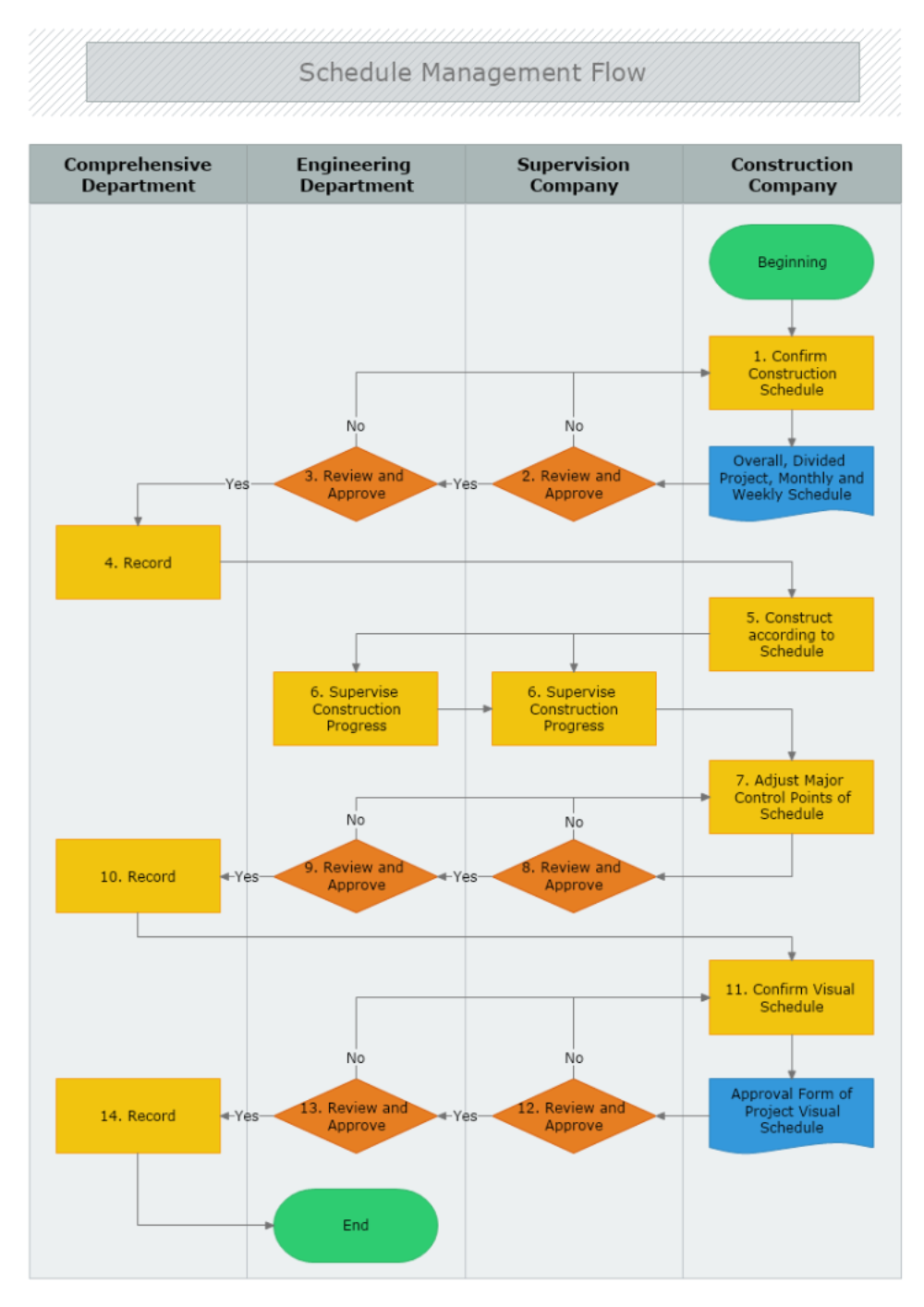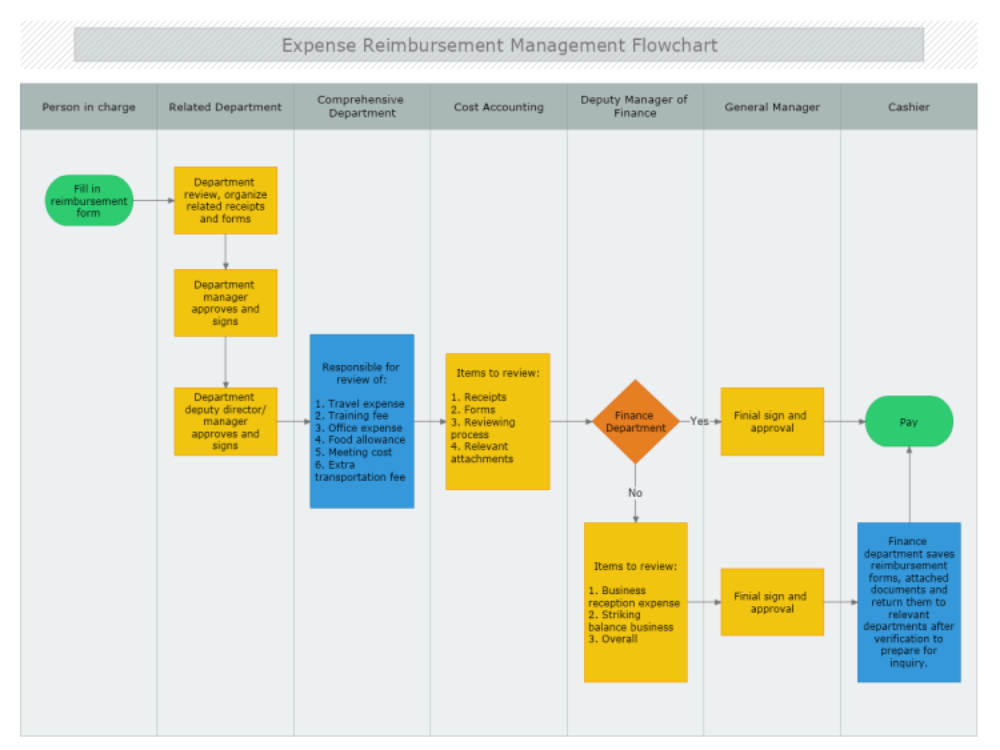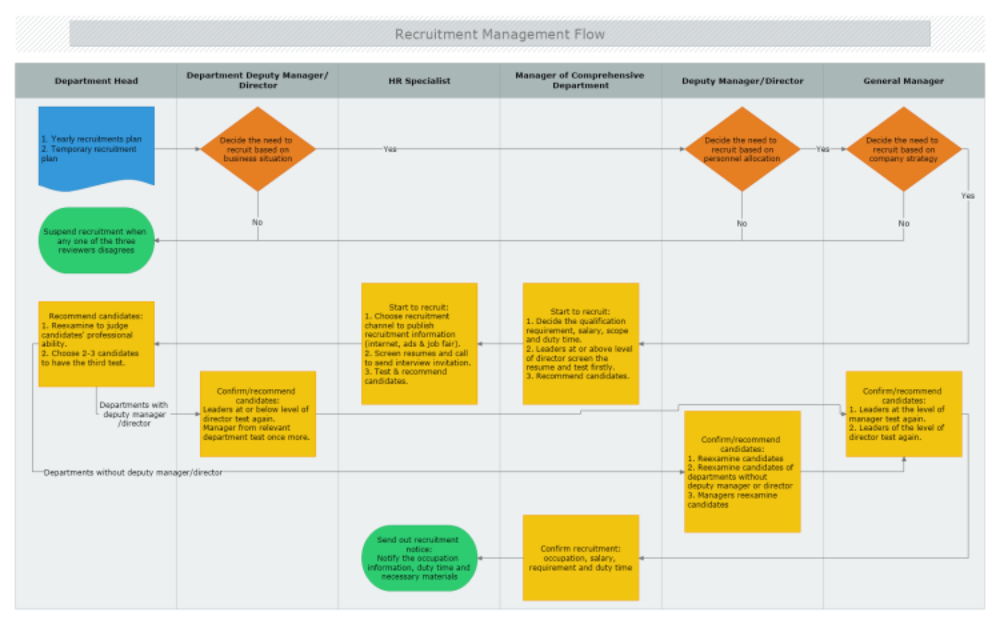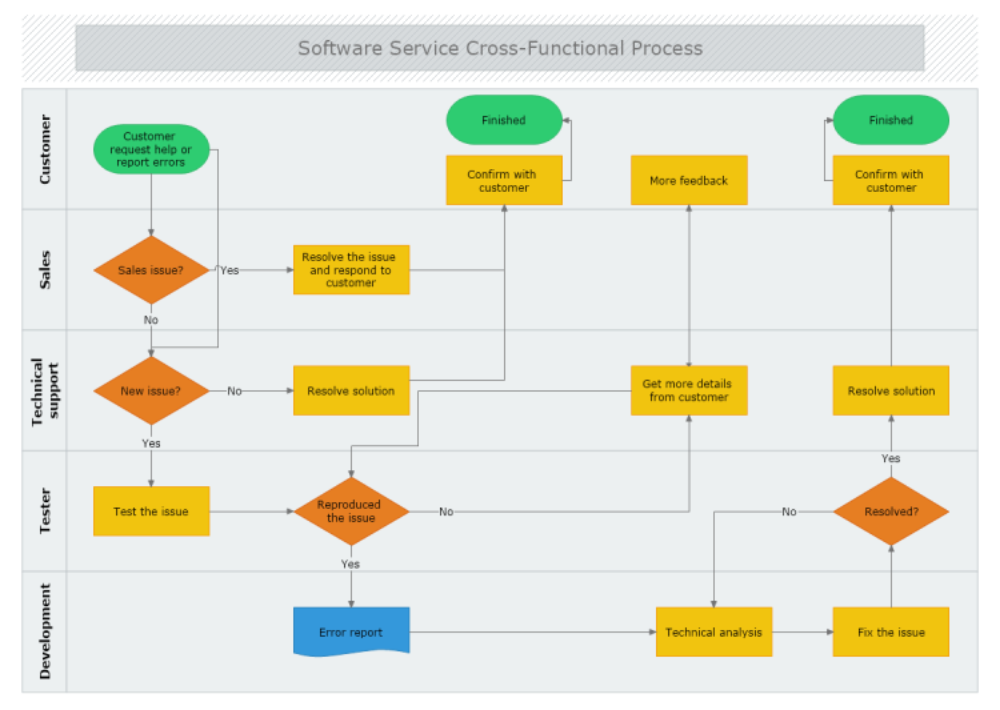A cross-functional diagram sometimes referred to as a deployment flowchart or swim lane flowchart, is a type of process mapping flowchart. This type of diagram illustrates the relationship between stakeholders within a process. This is achieved via the usage of columns or rows generally referred to as lanes. Each person, team, or department that is involved with the process is represented through a lane where are listed the activities of the process it is responsible for.
What are Cross-functional diagrams used for?
Identifying problematic steps within a process
Cross-Functional diagrams are mainly used during the process of improving workflow within an organization. The cross-functional diagrams help not only to identify the bottleneck of a process but also to show which department is responsible for it. This allows the company to identify the origin of a problem. Whether it’s due to lack of clarity or because of a rude to the customers' employee - a well-detailed cross-functional diagram can perfectly highlight the problematic activity.
Clarifying the employees' responsibilities
The cross-functional diagram is a really helpful tool for clarifying the responsibilities within the company. With its main purpose, of differentiating who is responsible for which step along the working process, they are very useful for helping departments work together in a better cooperation.
Where are Cross-functional diagrams suitable for?
Cross-functional diagrams: general business use
Cross-functional diagrams can be used for a large number of business purposes. Examples are improving an already existing process within the company or implementing a new process and distributing the activities amongst the personnel. They can also be used for precise scheduling of the company’s activities or working projects, like in the example below:
Cross-functional diagrams: uses in financial management
The financial aspect of a company’s commitments is perhaps one of the most complicated organizational tasks. A simple process like expense reimbursement in a large firm can consist of a dozen steps and engage over half a dozen of the company’s departments to complete.
Cross-functional diagram: uses in HR
The work of the HR department is usually tightly related to the processes in other departments. For example, when a recruitment process begins, the HR department needs to work together with at least few different sides: the candidate, who’s applying for the open position; the department that is seeking to fulfill a position; and the manager who's responsible for approving every new hire.
Cross-functional diagram: uses in Service
The more services a company offers, the more complicated serving a customer might become. For example: in a software firm a customer's request might be solvable by a salesman, or it might require the assistance of the technical support department. A simple request might show a bug in the software which the customer has purchased. This can result in a task that needs to be fulfilled by the development department. Having a detailed cross-functional diagram of the process can help the organization define and direct each customer’s request more precisely, and thus achieve better customer service and save precious working hours.



